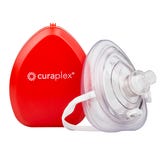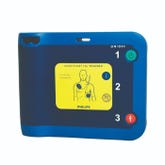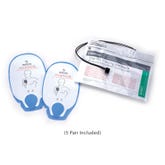What To Do If Someone Experiences Sudden Cardiac Arrest
- Oct 12, 2020

What To Do If Someone Experiences Sudden Cardiac Arrest
Follow these 5 steps to help improve SCA survival odds
The Chain of Survival is a series of actions that rescuers need to take to improve the likelihood of survival following a cardiac arrest. The time between the onset of SCA symptoms and care determines the likelihood of survival and understanding the five key “links” in the chain can save lives.
The 5 links in the adult out-of-hospital Chain of Survival are:
- Recognition of cardiac arrest and activation of the emergency response system.
- Early cardiopulmonary resuscitation (CPR) with an emphasis on chest compressions
- Rapid defibrillation
- Basic and advanced emergency medical services
- Advanced life support and post-cardiac arrest care
Link #1: Early Recognition (Call for HELP!)
Ask if the victim is okay. If they’re unresponsive, check for a pulse. Ask for assistance and dial 911 immediately.
If possible, send someone to retrieve the nearest automated external defibrillator (AED).
Link #2: Prompt CPR with Chest Compressions
If the person is unresponsive and has no pulse, begin CPR immediately. If you don’t know how to perform CPR, a 911 operator will talk you through the procedure. (If you’re not certified, there’s no time like the present! Get CPR and AED certified today.)
If you aren’t trained in CPR and you don’t have a CPR face mask, use hands-only CPR. Push hard and fast on the center of the chest at a rate of 100-120 compressions per minute. The compression depth for adults should be at least two inches and the chest should recoil completely between compressions. Continue until EMTs arrive.
Link #3: Rapid Defibrillation
If you have access to an AED, use it immediately! Simply turn it on and follow the visual and audio prompts. If a shock is advised, stand clear, and make sure no one is in contact with the patient, then administer the shock. AEDs will not deliver a shock unless it’s necessary.
Link #4: Basic and Advanced Care
The faster trained-help arrives on the scene, the better. Don’t hesitate to call 911 if someone is in distress.
Link #5: Advanced Life Support and Post Cardiac Arrest Care
This is where you, as a bystander, can leave it up to medical professionals. The final link in the Chain of Survival involves a multidisciplinary care team composed of cardiologists, physical therapists, and dieticians.
Ready to learn CPR or First Aid? AED.com is a trusted nationwide CPR training center. We offer CPR, First Aid, AED, and bloodborne pathogen training courses in all 50 states in traditional classroom settings and blended learning courses. To learn more about our courses or to schedule training, call our team at 800-544-0004 or email us at customerservice@cardiopartners.com.
DISCLAIMER: Information and resources found on the aed.com website and blog are intended to educate, inform, and motivate readers to make their health and wellness decisions after consulting with their healthcare provider. The authors are not healthcare providers. NO information on this site should be used to diagnose, treat, prevent, or cure any disease or condition.













 CALL US:
CALL US: